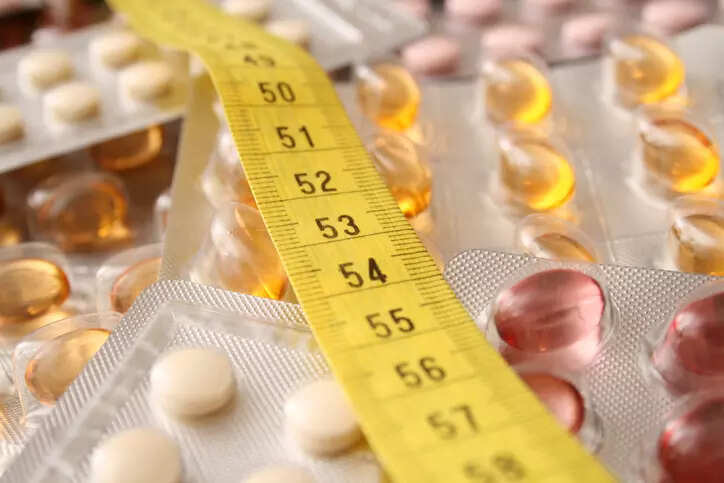
London: According to the study of real -world comparisons presented on Tuesday at the American Society for Metabolic and Bariatic Surgery Scientific Meeting in Bariatic Surgery Vashington Shington, the weight loss of the popular GLP -1 drugs caused about five times the weight loss.
“Clinical trials show weight loss between 15% and 21% for GLP -1S, but this study suggests that weight loss in the real world is significantly less for patients who have active prescriptions for the whole year,” NYU Langon Health Study Leader Dr. Avery Brown said in a statement.
Researchers, reviewed the records of 38,54545 patients, who were prescribed injectable semaglutide or terzep atide of 2018 and 2024 and 12,540 patients, who underwent bariatric surgery during the same period. Everyone started studying with a body mass index of at least 35, which is considered a serious obesity.
Novo is the main ingredient in Nordisk’s velocity and Semaglutide in the Ozampic, while Tirzep Atide Tide Alley is the main ingredient in the zepbound and silence of Lily.
Three years after the sleeve gastracteri or gastric bypass went through or three years after the drugs started, patients who underwent surgery, lost an average of 24% of their early weight, compared to about 5% for the same patients, who used at least six months and about 7% of drugs for a year.
Brown noted that up to 70% of patients in GLP -1 patients could stop treatment in one year.
“When both patient groups lose weight, metabolic and bariatic surgery are more effective and durable,” President of ASMBS Dr. N M. Rogers, who was not involved in the study, said in a statement.
“Those who have weight loss with GLP-1S or have challenges adhering to treatment due to side effects or costs, should be considered as an alternative or in combination with bariatric surgery.”
New blood tests can reduce liver transplant failure
Researchers say that experimental blood test surgeons can help catch and identify problems with new transplants at an early stage, researchers say.
It is not uncommon to maintain damage during the transplantation process for the tissues of transplanted organs and recipients. Signs of problems will later appear in regular blood tests, but to identify a specific site of damage, often requires expensive imaging studies and surgical biopsy, a report published in Nature Communications on Tuesday.
Works after leaving the DNA pieces that die by new test cells. Chemical signatures on these DNA pieces can be used to identify the original cell type and where it came from, with certain details, researchers searched.
If you can decide which part of the liver is injured – for example, gall ducts or blood vessels – “You can provide a more personal treatment approach that leads to better care of the patient,” Vashington Shington’s Medstar Georgetown University Hospital, Dr. Alexander Chromer said in a statement.
In addition to being faster and less aggressive than traditional biopsy, blood tests are also likely more accurate, as biopsy only sampling a few places in the liver and can miss the site of the problem, he added.
Georgetted has filed patent requests on technology, and the research team is looking for partners to commercialize the test.
Diabetes shows on the predecessor muscle ultrasound
Ultrasound examinations of thighs or shoulder muscles can detect insulin resistance at its early stages, researchers reported in the journal AL Ultrasound in Medicine.
“We have a large number of shoulders ultrasound and have seen that many patients’ muscles look abnormally bright,” Dr. Michigan University’s study leader Dr. Steve Soliman said in a statement.
His team found in a previous study. Most of these patients have type 2 diabetes. But some had bright muscles on the ultrasound even though there were no signs of diabetes or priabets.
Subsequently, on a short-term follow-up, these patients often develop bias or type 2 diabetes.
To test the possibility of non -proven muscle ultrasound as a means of predicting the development of pre or type 2 diabetes – potential before current methods – researchers performed muscle ultrasound on 25 patients, which were also evaluated for insulin resistance.
Although muscle ultrasound can detect insulin resistance and poor insulin sensitivity, the level of brightness in this small study was not associated with a direct position. Researchers are recruiting more participants to continue the analysis.
Researchers said that the brilliance of the muscle on the ultrasound indicates insulin resistance is less clear than the discovery, researchers said.
“Clinicians use excessive care and handheld ultrasound devices, sometimes called ‘Future of the Future’ for a quick diagnosis of different situations,” Soliman said.
“This device can easily use this device on the upper arm or thigh of a clinician who has no training, as much as regular weight or blood pressure check, and flagging potential patients as ‘high risk’ or ‘low risk’ for further testing.
(Reported by Nancy Lepid; Edit by Bill Berkroot)









